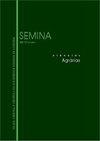Effect of Saccharomyces cerevisiae byproducts on milk phagocyte function and milk production in mid-lactation cows
IF 0.5
4区 农林科学
Q4 AGRICULTURE, MULTIDISCIPLINARY
引用次数: 0
Abstract
Saccharomyces cerevisiae is a supplement option for ruminants due to its ability to stimulate the immune system and productivity; however, there are few studies that demonstrate the effectiveness of this yeast in dairy cattle, especially regarding its effect on milk phagocyte function. Thus, this study examined the effect of two presentations of autolyzed S. cerevisiae on milk phagocyte function and milk production in healthy Holstein cows from the third to the fifth months of lactation with somatic cell count (SCC) less than 200,000 cells mL-1. Ten animals received cell wall-rich S. cerevisiae autolysate (WC 15 g animal day-1); 8 received the cytoplasm-rich extract (CYT 5 g animal day-1) and 7 received a diet without supplementation (C, control) for 60 days. Weekly oxidative metabolism analysis of milk leukocytes, production and milk constituents was carried out. The oxidative metabolism of milk leukocytes was higher in the WC group than in the C group between D32 and D48 (P≤ 0.05) and in the CYT group than in the C group between D24 and D40 (P≤ 0.05). The production and percentage of milk fat increased in CYT at D48 and D56. It is concluded that the CYT group had a greater effect on productivity, while on immunity the effect was intermediate, compared to the WC group, which was efficient in improving the immunity of the mammary gland.酿酒酵母副产物对泌乳中期奶牛乳吞噬细胞功能和产奶量的影响
酿酒酵母是反刍动物的补充选择,因为它能够刺激免疫系统和生产力;然而,很少有研究证明这种酵母在奶牛中的有效性,特别是关于它对牛奶吞噬细胞功能的影响。因此,本研究考察了两种自溶酿酒酵母对泌乳第3至第5个月体细胞计数(SCC)小于20万个细胞mL-1的健康荷斯坦奶牛的乳吞噬细胞功能和产奶量的影响。10只动物接受富细胞壁酿酒酵母自解毒液(wc15 g动物日-1);8只饲喂富细胞质提取物(CYT 5 g), 7只饲喂不添加的饲粮(C,对照组),饲喂60 d。每周进行乳白细胞、产量和乳成分的氧化代谢分析。D32 ~ D48期间,WC组乳白细胞氧化代谢高于C组(P≤0.05),D24 ~ D40期间,CYT组乳白细胞氧化代谢高于C组(P≤0.05)。在D48和D56时,CYT的产量和乳脂率均有所增加。综上所述,与WC组相比,CYT组对生产率有较大的影响,而对免疫力的影响为中等,对提高乳腺免疫力有较好的效果。
本文章由计算机程序翻译,如有差异,请以英文原文为准。
求助全文
约1分钟内获得全文
求助全文
来源期刊

Semina-ciencias Agrarias
农林科学-农业综合
CiteScore
1.10
自引率
0.00%
发文量
148
审稿时长
3-6 weeks
期刊介绍:
The Journal Semina Ciencias Agrarias (Semina: Cien. Agrar.) is a quarterly publication promoting Science and Technology and is associated with the State University of Londrina. It publishes original and review articles, as well as case reports and communications in the field of Agricultural Sciences, Animal Sciences, Food Sciences and Veterinary Medicine.
 求助内容:
求助内容: 应助结果提醒方式:
应助结果提醒方式:


